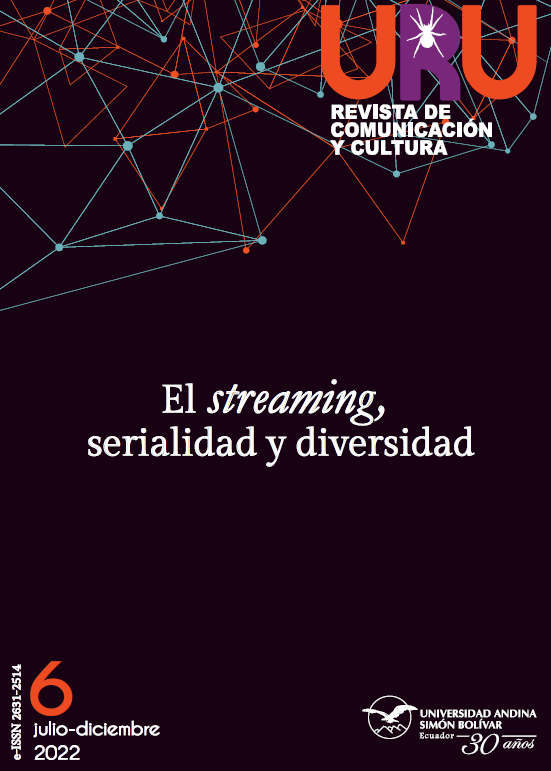South America: An Imaginary Built by Disney. The Study Case of Saludos amigos
DOI:
https://doi.org/10.32719/26312514.2022.6.10Keywords:
communication, South America, hegemony, Walt Disney, imaginaries and representationsAbstract
This work explores the construction of imaginaries and representations about the countries of South America, from the cinematographic production of the United States, which later became widespread on television. The study is carried out on a historical moment and with a specific case that are the animated films Saludos amigos produced by Walt Disney in 1942, at the request and financing of the US government, as part of a strategy of consolidation of its world political power. Saludos amigos creates an imaginary of folklore, party, geographical dangers and economic health for investment in the continent. In short, the idea of “friendly neighbors” was projected to visit, do business and as allies against external threats. The commercial and political success of the production made it possible to consolidate a relationship of domination in the cultural industry and in political relations between the United States and South America. Hence, the following research questions were worked on: What is the historical importance of the contents in cinema, which later became widespread on television, for the construction of the imaginary of South America, since the Disney production Saludos Amigos? and What is the geopolitical construction from the cultural logic of the Good Neighbor Policy?
Downloads
References
Adorno, Theodor, y Max, Horkheimer. 2005. Dialéctica de la Ilustración: Fragmentos filosóficos. Madrid: Trotta.
Cramer, Gisela, y Ursula Prutsch. 2006. “Nelson A. Rockefeller’s Office of Inter-American Affairs (1940-1946) and Record Group 229”. Hispanic American Historical Review 86 (4): 785-806. https://doi.org/10.1215/00182168-2006-050. DOI: https://doi.org/10.1215/00182168-2006-050
Crisóstomo, Raquel. 2011. “Walt Disney en el frente: Propaganda bélica y animación”. En XII Congreso Internacional de Literatura Española Contemporánea: El papel de la literatura el cine y la prensa (TV/Internet/MAV) en la configuración y promoción de criterios, valores y actitudes sociales, editado por Diana López, 121-8. A Coruña, ES: Andavira.
Disney, Walt. 1942a. Al sur de la frontera con Disney. Estados Unidos: Walt Disney Productions / Oficina de Asuntos Interamericanos.
Disney, Walt. 1942b. Saludos amigos. Estados Unidos: Buena Vista Films.
Fejes, Fred. 1986. “El imperialismo de los medios de comunicación”. Anàlisi 10/11: 87-99.
Harvey, David. 1998. La condición de la posmodernidad: Investigación sobre los orígenes del cambio cultural. Buenos Aires: Amorrortu.
Lénárt, András. 2018. “América Latina según Whitney y Disney. El cine interamericano de la Política de Buena Vecindad en los años 1930 y 40”. Acta Hispanica 23: 55-67. https://doi.org/10.14232/actahisp.2018.23.55-67. DOI: https://doi.org/10.14232/actahisp.2018.23.55-67
Lever, Yves. 1992. L’analyse filmique. Quebec: Boreal.
López, Ana M. 2002. “Are All Latins from Manhattan? Hollywood, Ethnography, and Cultural Colonialism”. En Film and Nationalism, editado por Alan Williams, 195-205. Nueva Jersey, US: Rutgers University Press.
MacBride, Seán. 1980. Un solo mundo, voces múltiples: Comunicación e información en nuestro tiempo. París: UNESCO.
Martínez Garza, Javier. 2005. “La oferta de televisión en América Latina: Hacia un análisis de flujos”. ZER. Revista de Estudios de Comunicación 19: 145-72.
Mattelart, Armand, y Michèle Mattelart. 2013. Historia de las teorías de la comunicación. Barcelona: Paidós.
Nordenstreng, Kaarle, y Tapio Varis. 1976. ¿Circula la televisión en un solo sentido? París: UNESCO.
Pizarro, Miguel Ángel. 2018. “‘Saludos amigos’: Cuando Disney se tuvo que ir a Sudamérica a hacer propaganda”. ECartelera. 6 de febrero.
Quijano, Aníbal. 2000. Colonialidad del poder, eurocentrismo y América Latina. Buenos Aires: CLACSO.
UNESCO. 2001. Declaración Universal de la UNESCO sobre la Diversidad Cultural. 2 de noviembre.
Varis, Tapio. 1986. “Los problemas globales y la comunicación”. Anàlisi 10/11: 141-61.
Williams, Raymond. 1977. Marxismo y literatura. Barcelona: Península.
Williams, Raymond. 2011. Televisión, tecnología y forma cultural. Buenos Aires: Paidós.
Downloads
Published
How to Cite
Issue
Section
License

This work is licensed under a Creative Commons Attribution-NonCommercial-ShareAlike 4.0 International License.
ASSIGNMENT OF RIGHTS, DECLARATION OF CONFLICT OF INTEREST AND DISSEMINATION
The authors who publish in this journal accept the following conditions:
- Authors retain copyright and grant the journal the right of first publication, with the work registered under the Creative Commons Attribution-NonCommercial-ShareAlike 4.0 License, which allows sharing, adapting and attributing the work (see: Open Access Policies).
- Authors can make other independent and additional contractual agreements for the distribution of the article published in this journal (e.g., include it in an institutional repository or publish it in a book) as long as they expressly indicate that the article was published for the first time in Uru: Revista de Comunicación y Cultura. In the case of reproduction, a note similar to the following must be included: This text was originally published in the journal Uru: Revista de Comunicación y Cultura N ° -, year of publication.
- Authors are encouraged to publish their work on the Internet (e.g. on institutional or personal pages) in the final version published by Uru: Revista de Comunicaicón y Cultura as it may lead to a wider and faster dissemination of the published work.









